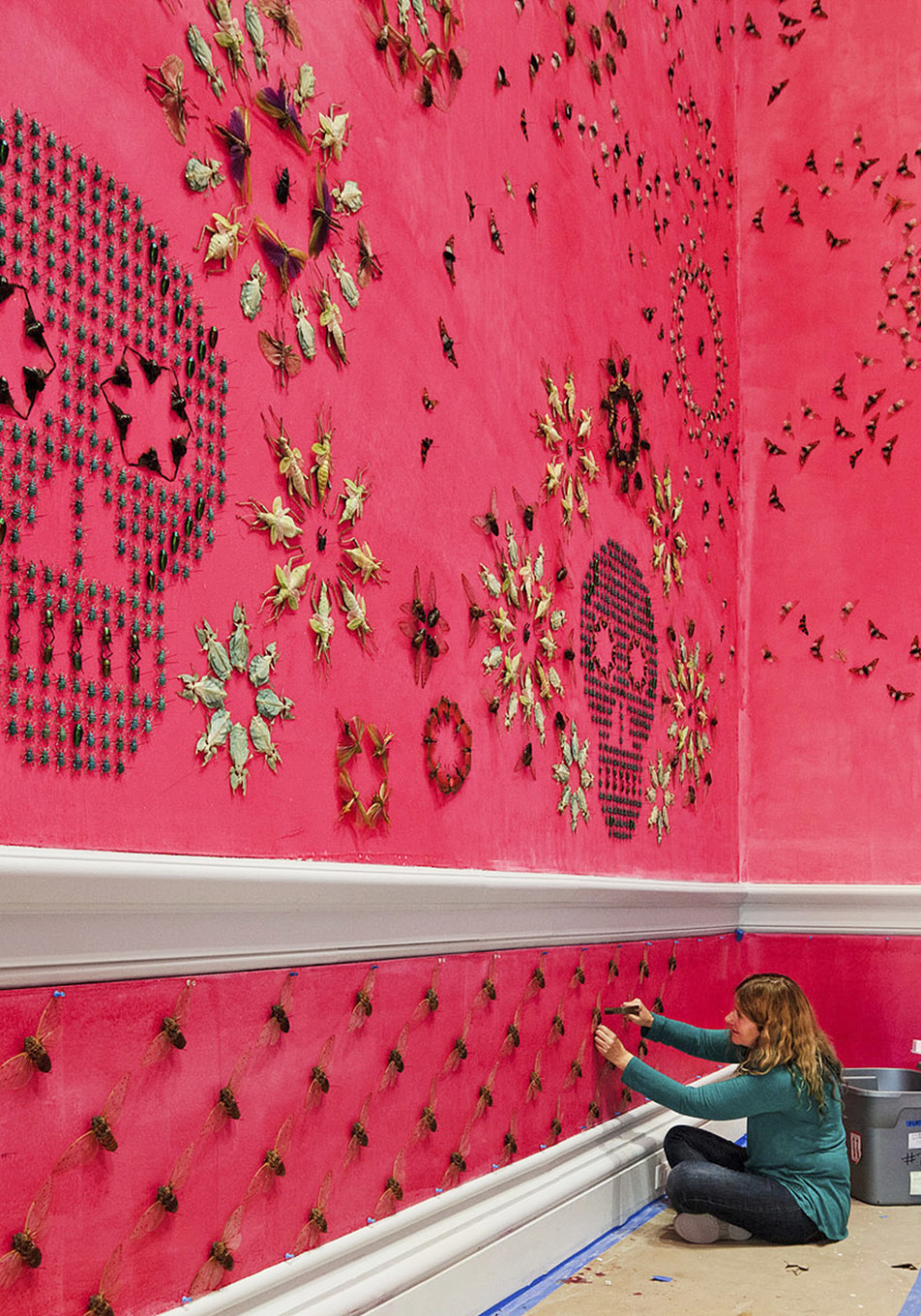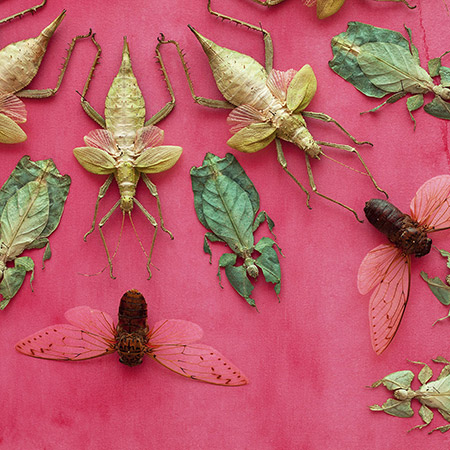This Wall Might Creep You Out If You Look Closely (But It Shouldn't)
Artist Jennifer Angus is getting people to look at insects in a whole new way.

Photo: Ron Blunt
Where some people see creepy-crawlies in need of squashing, Jennifer Angus sees beauty: Rather than rely solely on paints and dyes, the 55-year-old professor of textile design creates kaleidoscopic patterns from thousands of vibrant grasshoppers, iridescent beetles, and more.
Call of the Wild
As a kid, Angus had a penchant for patterns, but she didn't develop an interest in insects until her late 20s, when she was researching textiles in Thailand and discovered a garment called a singing shawl. "The fringe was made with metallic-looking green beetle wings," says Angus. "I'd never seen beautiful insects—maybe because I grew up in Canada, where all the bugs were brown or black. I realized I could take insects and turn them into patterns."
Source Material
Angus's bugs aren't backyard breeds. Most come from countries like Peru, Malaysia, and Indonesia. "I always try to use insects that have been farmed or gathered by indigenous people," says Angus. And she refuses to work with endangered species: "If an insect seems hard to find, I won't use it."
Walls of Fame
Since 2002, Angus has created site-specific installations at galleries and museums around the world—like her latest piece at the Smithsonian's Renwick Gallery in Washington, D.C. (through May 8). "My collection is very fragile," says Angus. "I've been reusing some insects for more than 15 years, so I drive it everywhere myself. That means knowing exactly how many bugs I'll use. I can't get to a gallery and go, 'I need another 500 cicadas!'"

Photo: Ron Blunt

Photo: Jennifer Angus
From top: Angus installing her Smithsonian show, In the Midnight Garden, bug by bug; a closer look at a 2013 exhibit, starring thorny sticks, black cicadas, katydids, leaf insects, and weevils.

Fear Factor
Angus hopes to inspire a sense of wonder and appreciation in her viewers: "If people leave one of my shows thinking about insects in a new way—one that doesn't involve a fly swatter or Raid—that's a success," she says. Although there's still one bug that hasn't quite won her over: "I can't say I'm a huge fan of cockroaches.

Call of the Wild
As a kid, Angus had a penchant for patterns, but she didn't develop an interest in insects until her late 20s, when she was researching textiles in Thailand and discovered a garment called a singing shawl. "The fringe was made with metallic-looking green beetle wings," says Angus. "I'd never seen beautiful insects—maybe because I grew up in Canada, where all the bugs were brown or black. I realized I could take insects and turn them into patterns."
Source Material
Angus's bugs aren't backyard breeds. Most come from countries like Peru, Malaysia, and Indonesia. "I always try to use insects that have been farmed or gathered by indigenous people," says Angus. And she refuses to work with endangered species: "If an insect seems hard to find, I won't use it."
Walls of Fame
Since 2002, Angus has created site-specific installations at galleries and museums around the world—like her latest piece at the Smithsonian's Renwick Gallery in Washington, D.C. (through May 8). "My collection is very fragile," says Angus. "I've been reusing some insects for more than 15 years, so I drive it everywhere myself. That means knowing exactly how many bugs I'll use. I can't get to a gallery and go, 'I need another 500 cicadas!'"

Photo: Ron Blunt

Photo: Jennifer Angus
From top: Angus installing her Smithsonian show, In the Midnight Garden, bug by bug; a closer look at a 2013 exhibit, starring thorny sticks, black cicadas, katydids, leaf insects, and weevils.

Fear Factor
Angus hopes to inspire a sense of wonder and appreciation in her viewers: "If people leave one of my shows thinking about insects in a new way—one that doesn't involve a fly swatter or Raid—that's a success," she says. Although there's still one bug that hasn't quite won her over: "I can't say I'm a huge fan of cockroaches.




